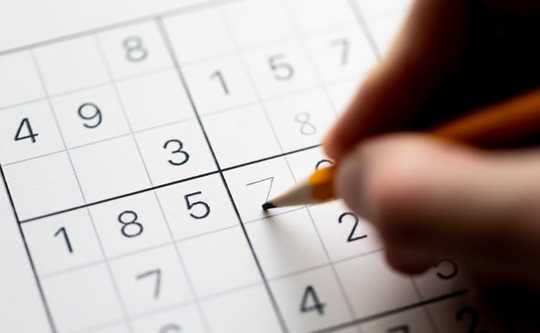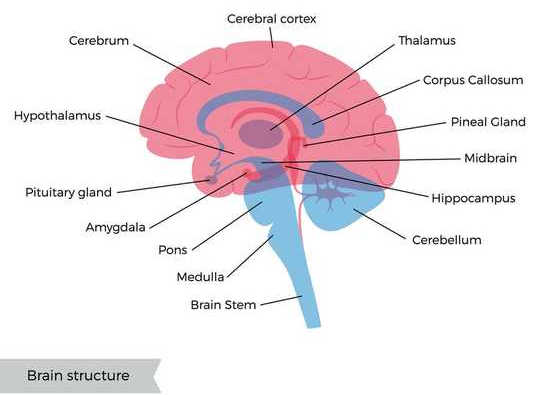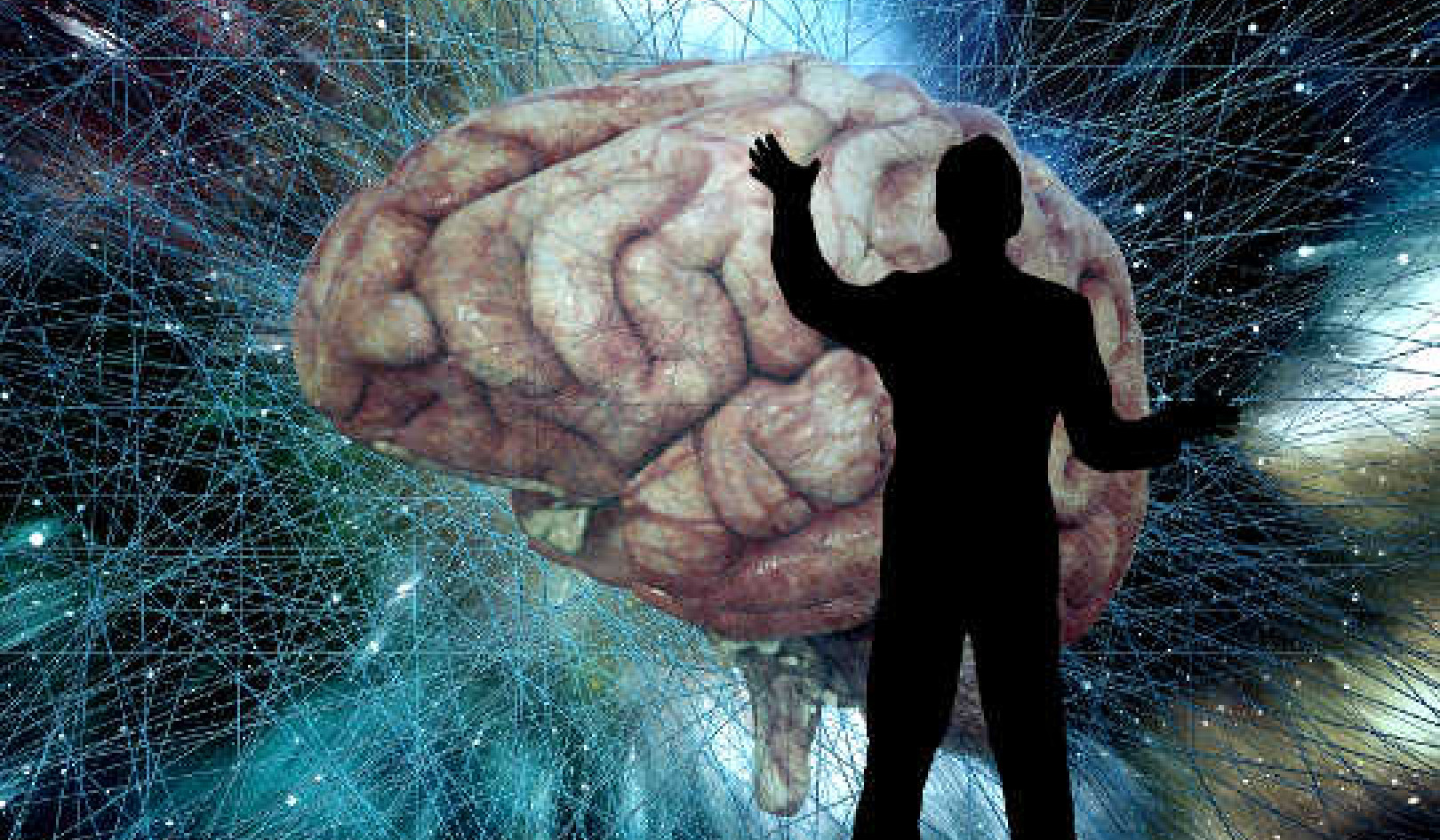
It gets easier with practice. Duntrune Studios/Shutterstock
Have you ever sat down to complete your morning crossword or Sudoku and wondered about what’s happening in your brain? Somewhere in the activity of the billions of neurons in your brain lies the code that lets you remember a key word, or apply the logic required to complete the puzzle.
Given the brain’s intricacy, you might assume that these patterns are incredibly complex and unique to each task. But recent research suggests things are actually more straightforward than that.
It turns out that many structures in your brain work together in precise ways to coordinate their activity, shaping their actions to the requirements of whatever it is that you’re trying to achieve.
We call these coordinated patterns the “low-dimensional manifold”, which you can think of as analogous to the major roadways that you use to commute to and from work. The majority of the traffic flows along these major highways, which represent an efficient and effective way to get from A to B.
We have found evidence that most brain activity follows these types of patterns. In very simple terms, this saves your brain from needing to work everything out from scratch when performing a task. If someone throws you a ball, for instance, the low-dimensional manifold allows your brain to swiftly coordinate the muscle movements needed to catch the ball, rather than your brain needing to learn how to catch a ball afresh each time.
In a study published on October 22 2019 in the journal Neuron, my colleagues and I investigated these patterns further. Specifically, we wanted to find out whether they play a role in shaping brain activity during really challenging cognitive tasks that require lots of concentration.
We scanned people’s brains with high-resolution functional magnetic resonance imaging (fMRI) while they performed a Latin squares task, which is similar to a Sudoku puzzle but uses shapes instead of numbers. Anyone who has played Sudoku before their morning coffee knows how much focus and concentration is required to solve it.
The idea behind the Latin squares task is to identify the missing shape in a particular location in a grid, given that each shape can only show up once in each row and column. We created three different levels of difficulty, defined by how many different rows and columns needed to be inspected to arrive at the correct answer.
Directing traffic
Our prediction was that performing the more difficult versions of the task would lead to a reconfiguration of the low-dimensional manifold. To return to the highway analogy, a tricky task might pull some brain activity off the highway and onto the back streets to help get around the congestion.
Our results confirmed our predictions. More difficult trials showed different patterns of brain activation to easy ones, as if the brain’s traffic was being rerouted along different roads. The trickier the task, the more the patterns changed.
What’s more, we also found a link between these changed brain activation patterns and the increased likelihood of making a mistake on the harder version of the Latin Squares test.
In a way, attempting a difficult task is like trying out a new rat run on your morning commute – you might succeed, but in your haste and stress you might also be more likely to take a wrong turn.
Overall, these results suggests that our brain activity perhaps isn’t as complicated as we once thought. Most of the time, our brain is directing traffic along pretty well-established routes, and even when it needs to get creative it is still trying to send the traffic to the same ultimate destination.
This leaves us with an important question: how does the brain achieve this level of coordination?
One possibility is that this function is fulfilled by the thalamus, a structure that lies deep in the brain but is connected to almost the entire rest of the brain.
Importantly, the circuitry of the thalamus is such that it can act as a filter for ongoing activity in the cerebral cortex, the brain’s main information processing centre, and therefore could exert the kind of influence we were looking for.

Positions of the thalamus and the cerebral cortex within the brain. Pikovit/Shutterstock
Patterns of activity in the thalamus are hard to decipher in traditional neuroimaging experiments. But fortunately, the high-resolution MRI scanner used in our study collected by my colleagues Luca Cocchi and Luke Hearne allowed us to observe them in detail.
Sure enough, we saw a clear link between activity in the thalamus and the flow of activity in the low-dimensional manifold. This suggests that when performing particular tasks, the thalamus helps to shape and constrain the activity in the cortex, a bit like a police officer directing busy traffic.
So next time you sit down to play Sudoku, spare a thought for your thalamus, and the low-dimensional manifold that it helps to create. Together, they’re shaping the brain activity that will ultimately help you solve the puzzle.![]()
About the Author
James Shine, Robinson Fellow, University of Sydney
This article is republished from The Conversation under a Creative Commons license. Read the original article.
Books on Improving Performance from Amazon's Best Sellers list
"Peak: Secrets from the New Science of Expertise"
by Anders Ericsson and Robert Pool
In this book, the authors draw on their research in the field of expertise to provide insights into how anyone can improve their performance in any area of life. The book offers practical strategies for developing skills and achieving mastery, with a focus on deliberate practice and feedback.
Click for more info or to order
"Atomic Habits: An Easy & Proven Way to Build Good Habits & Break Bad Ones"
by James Clear
This book offers practical strategies for building good habits and breaking bad ones, with a focus on small changes that can lead to big results. The book draws on scientific research and real-world examples to provide actionable advice for anyone looking to improve their habits and achieve success.
Click for more info or to order
"Mindset: The New Psychology of Success"
by Carol S. Dweck
In this book, Carol Dweck explores the concept of mindset and how it can impact our performance and success in life. The book offers insights into the difference between a fixed mindset and a growth mindset, and provides practical strategies for developing a growth mindset and achieving greater success.
Click for more info or to order
"The Power of Habit: Why We Do What We Do in Life and Business"
by Charles Duhigg
In this book, Charles Duhigg explores the science behind habit formation and how it can be used to improve our performance in all areas of life. The book offers practical strategies for developing good habits, breaking bad ones, and creating lasting change.
Click for more info or to order
"Smarter Faster Better: The Secrets of Being Productive in Life and Business"
by Charles Duhigg
In this book, Charles Duhigg explores the science of productivity and how it can be used to improve our performance in all areas of life. The book draws on real-world examples and research to provide practical advice for achieving greater productivity and success.























